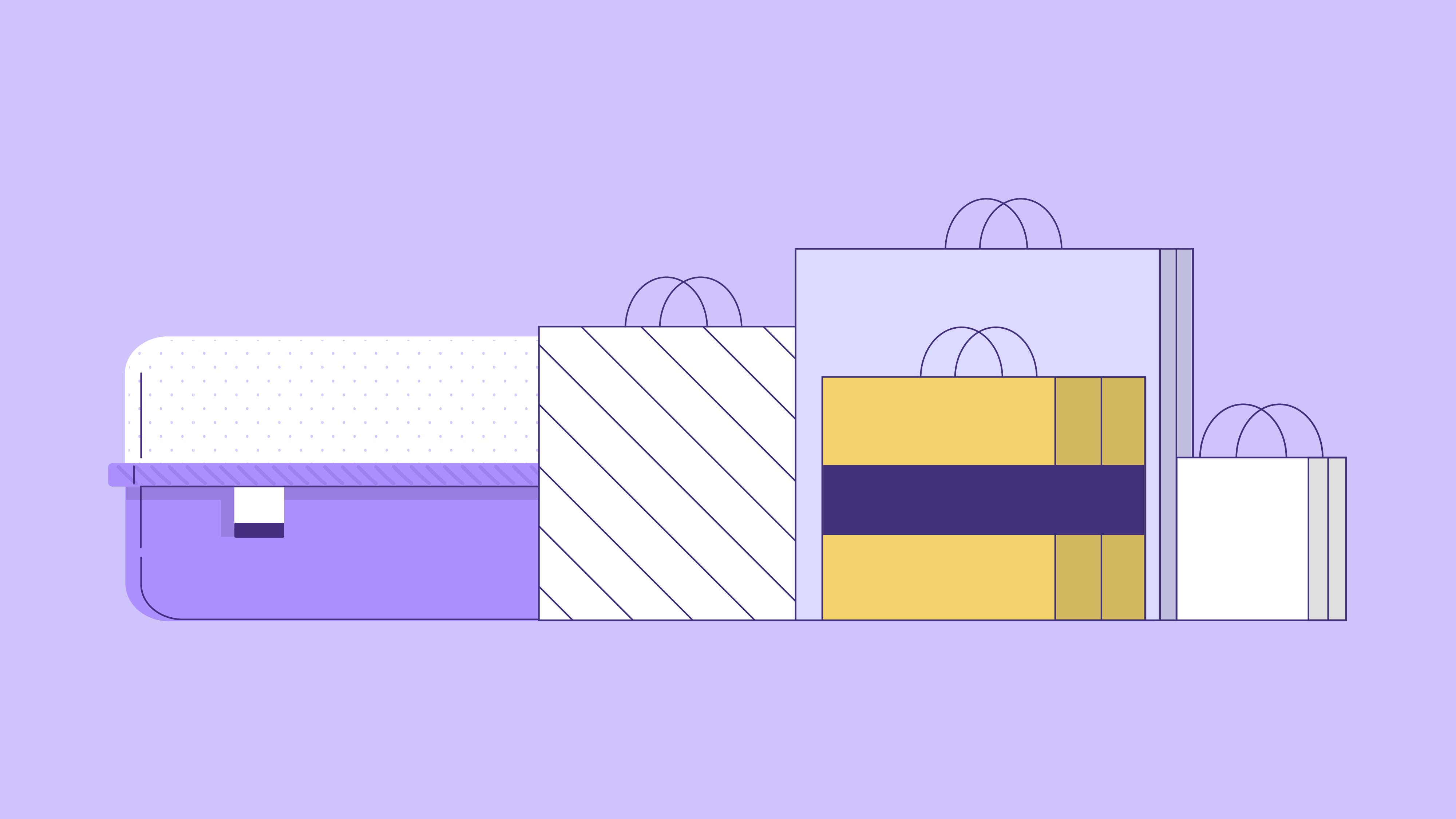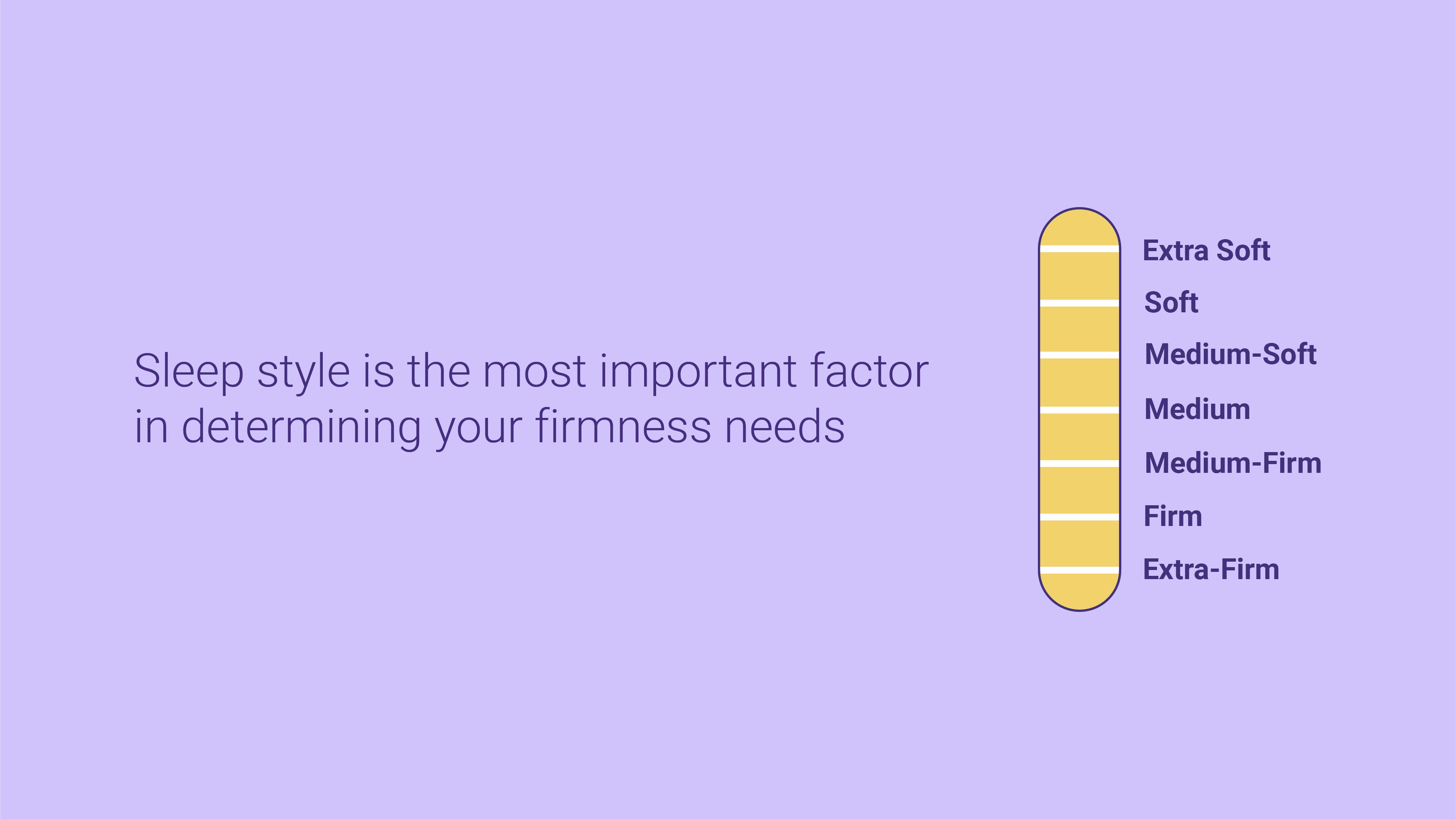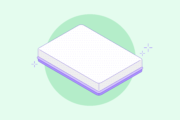
Memory Foam Mattress Buying Guide

- Memory foam, developed by NASA and evolving since the 80s, offers adaptable support, with modern variations addressing issues like heat retention and providing options such as gel-infused and plant-based foam.
- Memory foam mattresses consist of layers, including a comfort layer for contouring, a transition layer for responsiveness, and a support layer for spinal alignment, typically made of high-density polyfoam.
- Memory foam mattresses, known for excellent contouring and support, are cost-effective and durable; factors such as firmness, responsiveness, temperature regulation, and allergies should guide the selection process.
Memory foam is one of the most popular mattress materials on the market. It can contour to your shape in a way that offers unbeatable adaptable support. Memory foam mattresses are also among the most affordable mattresses on the market.
However, on the flip side, it can sometimes be hard to tell if you’re getting a cheap, low-quality memory foam mattress. Mattress marketers make a lot of claims. But do they back them up? Below, we’ll talk about how to tell.
What is Memory Foam?
Memory foam was originally invented by NASA to cushion and support the human body during high-velocity flights. It wasn’t long before the bedding industry caught wind up this special polyurethane foam, just after NASA released it to the public in the 80s. By the 90s, memory foam had started to take off.
The earliest memory foam beds were sweltering hot and couldn’t breathe at all. The first alteration to traditional memory foam’s original construction was to open it up to make it cooler and more breathable. Later, infusions were added to make memory foam more responsive, so it didn’t take forever to bounce back to its original shape.
Nowadays, modern memory foam mattresses are much more comfortable to sleep on than their earliest ancestors. That’s why this durable and adaptable foam is quickly overtaking innerspring mattresses for the top spot in the most popular mattress category.
Memory Foam Mattress Construction
All memory foam mattresses should come with at least two layers: the comfort layer and the support layer. Many memory foam mattresses also add a transition layer to help increase responsiveness and support. Some memory foam mattresses have four or more layers that contribute their own uniqueness to a mattress’s feel.
Comfort Layer
The comfort layer is the top layer of the mattress. This is the layer you sleep on all night. It will be made of the softest and most contouring memory foam. Depending on the intended firmness level of the mattress, the comfort layer is typically an inch to a few inches thick.
Transition Layer
The transition layer sits between the comfort layer and the support layer. Typically, the transition layer’s job in a memory foam mattress is to add responsiveness to the comfort layer. It may also be there to increase cooling or to protect your pressure points from the high-density foam in the support layer.
Support Layer
In a memory foam mattress, the support layer is also usually the base layer. This ultra-firm, high-density polyfoam layer is there to support your spine and encourage proper spinal alignment. Its other job is to fight sagging and help your mattress retain its shape. Since the support layer is so important, it should always make up at least 50 percent of your mattress.
Memory Foam Mattress Feel
Memory foam is among the most popular bedding materials for a reason. It has a fantastic feel that provides adaptable and pressure-relieving support.
Contouring
When it comes to contouring, nothing beats memory foam. Memory foam can alter its shape to fit yours in a way that even latex can’t. This is a crucial thing for your bed to be able to do. Contouring provides pressure relief to joints while filling in the gaps where the body curves inward to support the spine.
A mattress that can’t contour allows your spine to fall out of alignment. This can lead to everything from you waking up with back pain to more serious medical issues. So memory foam can establish one of the best mattresses for pressure points.
Support
Memory foam offers fantastic support because it is so contouring. Your mattress needs to keep your spine in a horizontal line. Memory foam does this by compressing underneath the areas where your body curves out (like hips and shoulders) and rising up in areas where it curves back in (like your waist and lumbar region). This keeps the spine in a neutral position.
Responsiveness
Responsiveness is where memory foam has some trouble. Memory foam can take its sweet time when bouncing back into shape after you change positions. Infusions or bouncy transition layers can help. But the truth is most memory foam mattresses are not as responsive as latex or hybrid mattresses.
This may not be an issue for people who don’t move around at night. But active sleepers who like to toss and turn might find memory foam’s slow response time annoying.
Temperature
Modern memory foams are much cooler than the earliest memory foam from the early 90s. There are tons of modifications that can be done to memory foam to make it cooler and more breathable (more on that below). However, if you want a mattress that’s naturally breathable without a bunch of chemical additives or structural changes, you’re better off going with latex.
Allergies
Memory foam is a fantastic option for those seeking a hypoallergenic mattress for allergies. It creates a very hostile environment for all kinds of microbes that could trigger allergies, like mold, mildew, dust mites, and bacteria. If you have a latex allergy along with your other allergies, memory foam is an excellent hypoallergenic choice.
Memory Foam Mattresses & Bed in a Box Delivery
Aside from being one of the most comfortable types of mattresses, memory foam helped launch the popularity of mattresses in a box. Traditional innerspring mattresses could not be compressed without damage, but the foam layers of a memory foam mattress could easily be flattened and rolled up for easy shipping, then regain their proper shape after unboxing.
This made mail order mattresses popular for shoppers who didn’t want to deal with the hassle of in-store shopping. The mattress would be shipped straight to your front door, in a box that could be more easily carried inside than an uncompressed mattress.
Now, there is the piece of advice to not sleep on a memory foam mattress before 24 hours have passed, but this rule is largely in place to ensure sleeper’s comfort. If you don’t have a better place to sleep, you can try out your memory foam mattress as soon as it’s been unboxed.
Types of Memory Foam
Memory foam offers lots of options in terms of cooling and allergy relief.
Traditional Memory Foam
Virtually no mattress has traditional, closed-cell memory foam anymore. Closed-cell memory foam is the earliest ancestor of modern memory foam that we were talking about above. This memory foam is very hot and not responsive. That’s why it’s been phased out by newer options.
Open-Cell Memory Foam
Even the most basic, bottom-of-the-line modern memory foam should have open-cell construction. Open-cell memory foam has thousands of tiny air pockets throughout the foam. This allows airflow through the whole mattress and helps wick heat and moisture away from you.
Gel Memory Foam
Gel memory foam ups the ante on coolness. The gel acts as a thermal conductor, pulling heat away from you and transferring it out of the mattress. The gel can be infused into the memory foam. Memory foam mattresses might also come with gel microbeads or even a layer of pure gel for extra cooling.
Plant-Based Memory Foam
Plant-based memory foam swaps out some petroleum products for plant oils. This creates an airier, more breathable foam that has the added benefit of being more responsive than pure polyurethane foam.
Infused Memory Foam
Some memory foam includes infusions of thermally conductive materials like copper or graphite. Just like with gel, metals and minerals act as conductors to pull your body heat away from you. There’s an extra perk with these infusions: they increase memory foam’s ability to fight bacteria and mold growth.
Memory Foam Mattress Cost
Memory foam is one of the most economical choices available. While its average sticker price is higher than that of innerspring mattresses, its increased durability can make its lifetime cost lower. That means the right memory foam mattress may just be your most affordable option in the long term.
Initial Purchase Price
The average initial cost of memory foam mattresses is $1,100 for a queen. That’s slightly higher than the $950 tag of a queen innerspring. But it’s much lower than the average of $1,700 for a hybrid and $2,000 for a latex mattress.
Keep in mind this is just an average price for a queen memory foam mattress. Depending on the size, brand, and construction of your memory foam mattress, you could be paying a whole lot more or a whole lot less than the average.
Durability
Memory foam might be a bit more expensive upfront than an innerspring mattress. But since it doesn’t have any coils to break down, memory foam mattresses will outlast innerspring ones, sometimes by many years.
The average life expectancy of a memory foam mattress is 10 to 20 years. Compare that to the average life expectancy of an innerspring (10 years or less), and memory foam can actually be the most affordable mattress in the long term.
Memory Foam Mattress Firmness
Memory foam mattresses come in a range of firmness levels, from very soft to very firm. This gives you tons of options to select based on your sleep style and body type.
Sleep Style
Sleep style is the most important factor in determining your firmness needs. Firmness is measured on a scale of 1- to 10, with 10 being the firmest. Side sleepers need the lowest numbers on this scale, while stomach sleepers need the highest.
If you sleep on your side, your hip and shoulder joints contact the surface of the bed. Your body weight exerts pressure on these joints, and that can result in pain if your mattress for side sleeping doesn’t compress enough. That’s why side sleepers need softer mattresses (3 to 4).
Combo sleepers flip around from night to night or even multiple times throughout the night. To accommodate this, you’ll need a mattress with a middle-of-the-road feel that can accommodate multiple positions without sacrificing cushioning or support. A 5 on the firmness scale is usually best when it comes to mattresses for combination sleepers.
Back sleepers need a medium-firm mattress (6) on the firmness scale. This is because back sleepers need a balance between support and cradling to keep their bodies lifted onto the sleeping surface and their lumbar regions supported.
Stomach sleepers need the highest firmness level of all. They need at least a 7, if not an 8, to keep their pelvises lifted onto the bed. This prevents overarching of the spine and helps reduce or eliminate lower back pain.
Body Type
If you weigh between 130 and 230 pounds, you don’t really have to worry about your body type impacting your firmness needs. However, if you’re under or over these two numbers, you may have to consider your firmness level.
Petite sleepers are under 130 pounds. They may need to go down a firmness level from the one that corresponds to their sleep position to get enough compression to protect their pressure points from pain. Plus-size sleepers (over 230 pounds) need to do the opposite. They may need to increase their firmness to get enough lift to fight sinkage.
Remember, your sleep style is always your baseline. Therefore, you should be adjusting your firmness based on your sleep position first and bodyweight second. For example, a plus-size back sleeper might consider upping their firmness from a 6 to a 7 based on their weight.

Memory Foam Mattress Size
The size of the memory foam mattress you need depends on three things: your height, the size of your room, and the number of sleepers who are going to be using the bed.
There are non-standard sizes like the Texas, Wyoming, and Alaskan king mattresses, but these are harder to find, as are corresponding accessories.
Twin
Twin size mattresses are 38 by 75 inches, perfect for single sleepers under six feet tall. These are the smallest of the standard mattress sizes. A twin size bed is best for compact spaces like children’s rooms, college dorm rooms, and multi-purpose guest rooms.
Twin XL
Twin XL size mattresses are still perfect for compact spaces. But they’re 38 by 80 inches. This is a better size for those over six feet tall who need some extra legroom.
These make a better choice for daybed mattresses or multi-bed guest rooms because they can accommodate a wider range of sleepers.
Full
Full size beds are also called double beds because they are supposed to be able to accommodate two sleepers. But these beds are better suited to single adult sleepers under six feet tall. Full size mattresses don’t have enough width to offer sufficient sleeping space to couples. At 54 by 75 inches wide, full mattresses only offer each partner the same width as a baby’s crib.
Queen
The queen size mattress is the most versatile of all the mattress sizes. At 60 by 80 inches, it’s large enough to accommodate couples but small enough to fit in guest bedrooms. It’s long enough to provide enough legroom to those over six feet tall. But it’s still compact enough to be a good choice for single adults.
King
The standard or eastern king size bed is actually the largest bed size in terms of total surface area. The king size mattress is 76 by 80 inches. This not only fills out large master bedrooms. It also offers couples plenty of wiggle room to spread out and move around all night.
California King
The California king size mattress is 72 by 84 inches. This is an excellent size for filling out extra-large master bedrooms that might be left looking empty even by a king size bed. The California king bed also a good size for those well over six feet tall who find their feet hanging over the edge even with an 80 inch-long mattress.
Memory Foam Mattress Quality
There are several measures of quality you should be on the lookout for when you’re shopping for a memory foam bed. The best ways to determine if you’re buying a product that’s built to last are looking at its certificates and its warranty/sleep trial combination.
Warranty
The warranty of a memory foam mattress is a good indicator of how long the manufacturer has built it to last. For instance, if your mattress retailer has a warranty that covers the mattress for 20 years, they’re not expecting your mattress to have manufacturing-related problems for at least that long. At least a 10-year warranty is a good minimum to keep in mind.
Make sure you’re reading the fine print when it comes to mattresses with a warranty. You’ll want to ensure there are no loopholes that allow the manufacturer to get out of covering their product for frivolous reasons. A generous manufacturer warranty that doesn’t have a lot of legal speak or fine print is a good sign you’re buying a quality mattress.
Sleep Trial
The sleep trial is another good way to tell if you’re buying a quality memory foam mattress. Manufacturers that offer a risk-free sleep trial are betting money that you’ll find your choice to be one of the most comfortable mattresses, liking the product enough to keep it.
Make sure the words “risk-free” really mean risk-free. A truly risk-free sleep trial means that you have a certain number of nights to sleep on the mattress and return it for a full refund for any reason. A 100-night sleep trial is the minimum amount of time you’ll need to break in your memory foam mattress and decide if it’s right for you.
Certifications
There’s one certification you should look for above all others when it comes to shopping for a memory foam mattress: the CertiPUR-US® certificate. CertiPUR-US® sets strict standards for flexible polyurethane foam.
Memory foam has to be made without toxic chemical flame retardants. It cannot have any heavy metals. And it must be low in Volatile Organic Compounds (VOCs) so that it doesn’t experience too much off-gassing.
To be truly sure you’re getting a memory foam mattress that’s safe to sleep on every night, you should seriously consider avoiding memory foam beds without CertiPUR-US® certification. Other good certifications to look for include Oeko-Tex Standard 100 and GREENGUARD certificates. However, the gold standard of memory foam is a CertiPUR-US® certificate.
Memory Foam Alternatives
If you’re not 100 percent sure about memory foam, you do have a few other types of mattresses that offer tons of comfort and support. You could consider a hybrid mattress that uses memory foam, a latex foam mattress, or a mattress that features the brand new Serene™ foam that just came onto the market a few years ago.
Memory Foam Hybrids
Hybrid mattresses are one of the best alternatives to memory foam mattresses for those who want all the adaptable comfort of memory foam without the drawbacks of reduced breathability and slow response time.
Hybrids combine a pocketed coil support layer with a comfort layer of at least two inches of foam. Some hybrids also add a foam transition layer. Hybrid mattresses can feature any type of foam, including latex and memory foam. However, the most common type of hybrid is a memory foam hybrid.
Memory foam hybrids are extremely contouring because individually wrapped coils can move independently of one another. They’re much more flexible than the open coil systems found in innerspring mattresses. Combine pocketed coils with highly contouring memory foam above, and you’ve got one adaptable mattress.
The best advantages that memory foam hybrids have over memory foam mattresses are their responsiveness and breathability. The coil support layer bounces back as soon as you change positions, making the whole mattress bouncy while maintaining the contouring of memory foam.
The pocketed coils also allow for tons of airflow throughout the mattress. This ups the cooling factor above what even copper or gel memory foam could offer on its own.
The main downsides to hybrids are their expense and lowered durability. Hybrid mattresses are a big step up from pure memory foam in terms of cost. At $1,700 for an average queen hybrid mattress, you can expect to pay a much higher premium for your memory foam hybrid mattress. Not to mention what a latex hybrid could cost.
Since hybrids have a coil core, they sag faster. Coils lose tension and break down a lot faster than ultra-firm foam support cores. That means you can expect fewer years out of your hybrid mattress than you can a memory foam one of similar quality. Hybrids usually wear out after about 15 years, while memory foam can make it to 20.
Our hybrid mattress buying guide delves into this mattress type in depth.
Latex Foam
Latex is a natural foam that comes from the sap of the rubber tree. If you want an all-natural, entirely plant-based foam, latex is just about your only option. If you want an organic mattress, natural latex is definitely your only option. Latex is pure plant material, with very few processing chemicals and no synthetic ingredients.
Even people who don’t really care all that much about getting an organic mattress might consider latex foam. Latex might not be as contouring as memory foam. But it one-ups it in terms of responsiveness and coolness.
A latex mattress naturally wants to hold its shape. That means it bounces right back to its original shape as soon as you change positions without sacrificing motion transfer control. This can be a lot more comfortable for active sleepers who like to toss and turn during the night.
Latex’s natural breathability is also a plus for hot sleepers. Unlike memory foam, latex doesn’t need a bunch of chemical additives or structural alterations to make it cooling and breathable. It just is. If you want a cool mattress that won’t off-gas and contains no synthetic ingredients, latex is your new mattress.
However, all the natural benefits of a latex mattress come at a cost. If you thought hybrids were expensive, you wouldn’t like latex’s price tag. The initial cost of latex is $2,000 for a queen on average. Not great for someone shopping on a budget. However, latex’s unbeatable durability offsets some of its high upfront costs. If you get an all-latex mattress, you won’t be replacing it for over 20 years.
See our latex mattress buying guide for more information about this mattress type.
Serene™ Foam
Serene™ foam is one of the newest sleep technologies on the market. This foam is made of flexible polyurethane, just like memory foam. Unlike memory foam, it uses billions of microscopic air capsules to create a highly breathable mattress that’s cool to the touch. This construction is called Supportive Air Technology.
Hot sleepers who can’t seem to cool off with anything else might be able to get some relief out of Serene™ foam. This is also a great choice for those with allergies because its enhanced breathability means Serene™ foam is even less prone to moisture buildup than memory foam. That means it can resist allergens like mold and bacteria even better.
One thing to keep in mind about Serene™ foam is that it’s such a new sleep technology we don’t really know how durable it is. Serene™ also doesn’t come in tons of different firmness options because not many manufacturers are using it in their mattresses yet. That means if you want a Serene™ foam mattress, you have limited choices in the current market.
FAQs
Can a memory foam mattress help with back pain?
Absolutely! Memory foam is one of the best types of mattresses for back pain. The flexible foam layers can follow the unique curve of your back to help keep your spine in proper alignment. Ensuring your spine stays in a straight line all night long is vital to preventing back pain.
Just remember that your memory foam mattress will only prevent back pain if it’s the right firmness. For instance, if your back pain is caused by stomach sleeping, a soft memory foam mattress won’t help you. Only a firmer mattress will keep you lifted onto the sleeping surface and prevent your back from arching.
Likewise, if your pain is caused by a medical issue or even just aging, you’ll need to switch up the firmness again. A medium-firm mattress is better for people whose back pain is not caused by stomach sleeping. Memory foam mattresses for back pain only as good as its firmness level when it comes to back pain relief.
What certifications should I look for in my memory foam mattress?
When it comes to memory foam, CertiPUR-US® certification is the gold standard. This certificate guarantees that memory foam is free of heavy metals, dangerous chemicals like formaldehyde, and toxic flame retardants. It also means the certified mattress is low in VOCs and will not negatively impact indoor air quality.
Other good certifications to look for are those by GREENGUARD and Oeko-Tex. GREENGUARD certification means that a product has been lab-tested and proven to have low chemical emissions.
Oeko-Tex certified items have been tested from top to bottom to ensure they contain no harmful substances. Unlike CertiPUR-US® certification, Oeko-Tex certifications can cover your entire mattress, including its cover and any accessories like buttons or zippers.
How can I tell if my memory foam mattress is high quality?
There are several ways to tell if your mattress is high-quality, but transparency, certifications, and warranty are great places to start. Transparency simply means that a mattress retailer is honest about their product. Do they talk about the different layers of the mattress? Do they discuss where their materials are sourced? Lack of transparency can mean a lack of quality.
Certifications are also a great measure of quality. You should avoid memory foam mattresses without a CertiPUR-US® certificate. GREENGUARD and Oeko-Tex are also good measures of quality. But CertiPUR-US® is the main logo to look for with memory foam.
Warranty and sleep trial are also good measures of quality. If a mattress features at least a 10-year warranty and 100-night sleep trial, it’s a good bet they’ve made their product durable and comfortable enough they don’t expect to deal with many returns or major problems.
Do memory foam mattresses off-gas?
All memory foam mattresses experience at least some off-gassing. Off-gassing is when the VOCs in your mattress start to break down and disperse into the air during the first few weeks or months after you purchase your new bed. Both polyurethane foam and the adhesives inside your mattress could have VOCs, which are injected into the bed during manufacturing.
Most of the time, the worst thing you’ll experience from off-gassing is an unpleasant smell for a little while until the off-gassing process is complete. This might be worse if you’re unpacking an online mattress because vacuum sealing can trap gasses. Sometimes, off-gassing can cause symptoms like mild nausea or headache, but it should never be dangerous to your health.
Memory foam mattresses with a CertiPUR-US® certificate should not do much off-gassing. The CertiPUR-US® standard sets strict limits on the amount of VOCs that a mattress can contain. This limits its ability to off-gas.
Which is better, pure memory foam or a memory foam hybrid?
That depends on your personal preferences. Those who like bounce and breathability may prefer a hybrid, while those who want affordability and durability would do better with pure memory foam.
Hybrids use memory foam comfort layers and a pocketed coil support core to create a mattress that feels like both memory foam and innerspring mattresses at the same time. Hybrids are breathable and cool, which would appeal to hot sleepers. Hybrid mattresses are also highly responsive. Active sleepers will appreciate the fact that hybrids bounce right back into place.
Those who want to keep costs low and avoid replacing their mattress for a long time should consider pure memory foam. The average cost of a queen memory foam mattress is hundreds less than an average hybrid’s cost. And a memory foam bed will also likely outlast most hybrid mattresses because it has no coils to lose tension and break down.
Bottom Line
Memory foam is one of the best mattress materials in town. It offers unbeatable contouring, amazing support, and excellent pressure relief. With the modern advancements that have been made in the last few decades, memory foam has also gotten cooler and more responsive than it originally was.
With a combined durability and low initial cost that make it one of the most affordable mattresses on the market, there aren’t many reasons not to buy a memory foam mattress!



